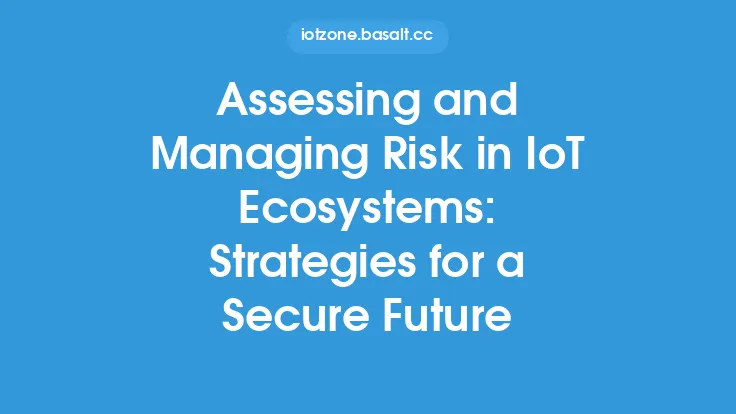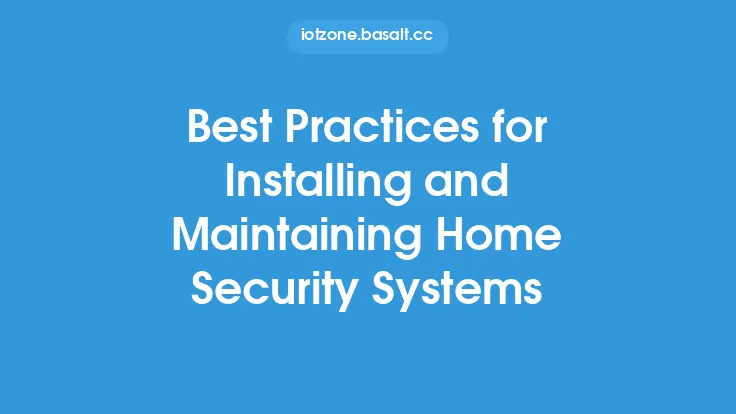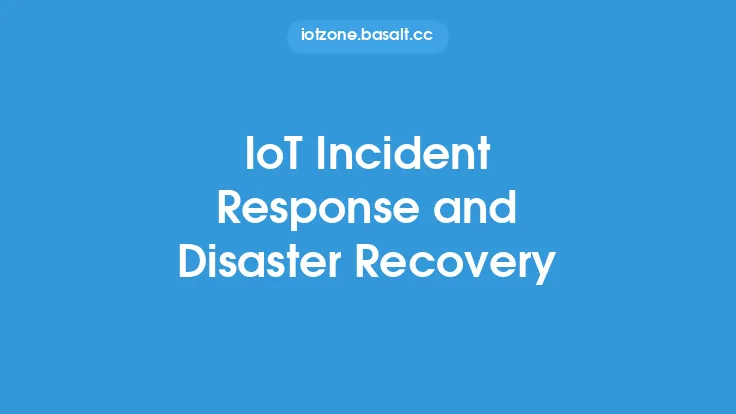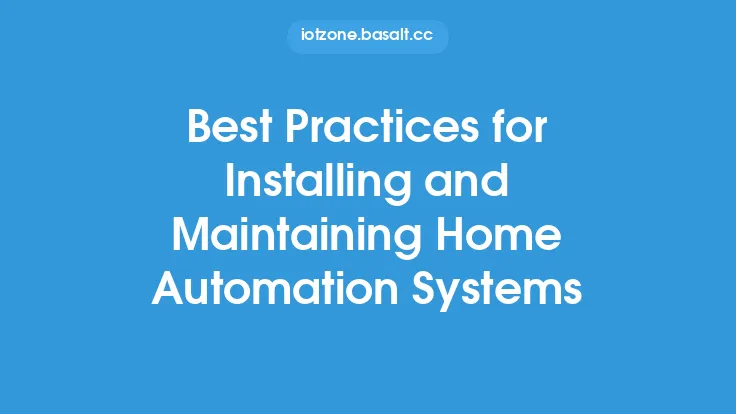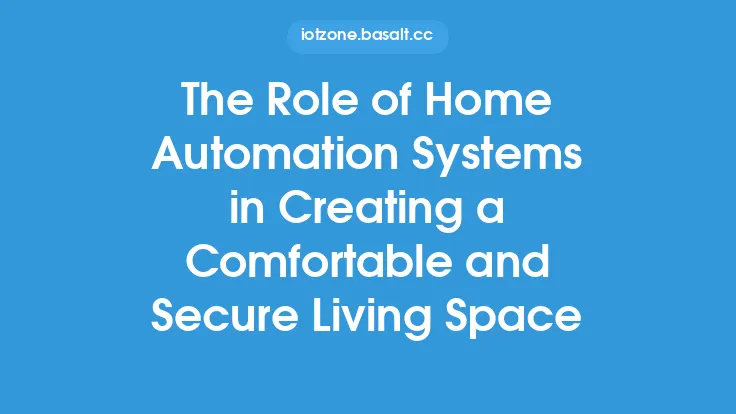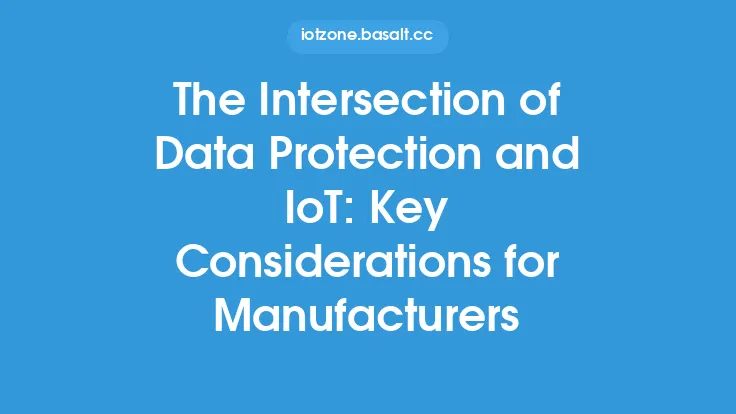The increasing reliance on IoT systems has led to a massive amount of data being generated, transmitted, and stored. This data is not only valuable but also sensitive, making it a prime target for cyber threats and data loss. As such, it is essential to have a robust data backup and recovery strategy in place to ensure business continuity and minimize the impact of data loss. In this article, we will delve into the world of data backup and recovery strategies for IoT systems, exploring the different approaches, techniques, and best practices that can be employed to protect IoT data.
Introduction to Data Backup and Recovery
Data backup and recovery are critical components of any IoT system's data protection strategy. Data backup refers to the process of creating copies of data to prevent data loss in the event of a disaster or system failure. Data recovery, on the other hand, refers to the process of restoring data from backup copies to ensure business continuity. In IoT systems, data backup and recovery are particularly challenging due to the sheer volume, velocity, and variety of data being generated. Moreover, IoT data is often distributed across multiple devices, making it difficult to manage and protect.
Types of Data Backup Strategies
There are several types of data backup strategies that can be employed in IoT systems, including:
- Full backup: A full backup involves creating a complete copy of all data in the IoT system. This approach is time-consuming and resource-intensive but provides the most comprehensive protection against data loss.
- Incremental backup: An incremental backup involves creating a copy of only the data that has changed since the last backup. This approach is faster and more efficient than full backups but requires more frequent backups to ensure data integrity.
- Differential backup: A differential backup involves creating a copy of all data that has changed since the last full backup. This approach provides a balance between full and incremental backups, offering a good trade-off between data protection and resource utilization.
- Cloud backup: Cloud backup involves storing backup data in a cloud-based storage service. This approach provides scalability, flexibility, and cost-effectiveness, making it an attractive option for IoT systems.
Data Backup Techniques for IoT Systems
Several data backup techniques can be employed in IoT systems, including:
- Snapshotting: Snapshotting involves creating a temporary copy of data at a particular point in time. This approach is useful for creating backups of IoT data that is constantly changing.
- Replication: Replication involves creating multiple copies of data in real-time. This approach provides high availability and redundancy, making it suitable for IoT systems that require continuous operation.
- Data deduplication: Data deduplication involves eliminating duplicate copies of data to reduce storage requirements. This approach is useful for IoT systems that generate large amounts of redundant data.
- Compression: Compression involves reducing the size of data to reduce storage requirements. This approach is useful for IoT systems that generate large amounts of data, making it easier to store and transmit.
Data Recovery Strategies for IoT Systems
Data recovery strategies for IoT systems involve restoring data from backup copies to ensure business continuity. Several data recovery strategies can be employed, including:
- Restore from backup: Restore from backup involves restoring data from a backup copy to the original location. This approach is the most straightforward but may not always be possible, especially if the original location is no longer available.
- Restore to alternate location: Restore to alternate location involves restoring data to a different location, such as a temporary server or a cloud-based storage service. This approach provides flexibility and scalability, making it suitable for IoT systems that require rapid recovery.
- Point-in-time recovery: Point-in-time recovery involves restoring data to a specific point in time. This approach is useful for IoT systems that require precise recovery, such as in the event of a cyber attack or data corruption.
Best Practices for Data Backup and Recovery in IoT Systems
Several best practices can be employed to ensure effective data backup and recovery in IoT systems, including:
- Develop a comprehensive data backup and recovery plan: A comprehensive plan should include procedures for data backup, storage, and recovery, as well as testing and validation.
- Use automation: Automation can help streamline data backup and recovery processes, reducing the risk of human error and improving efficiency.
- Use encryption: Encryption can help protect backup data from unauthorized access, making it an essential component of any IoT data protection strategy.
- Test and validate: Testing and validation are critical components of any data backup and recovery strategy, ensuring that data can be restored quickly and accurately in the event of a disaster or system failure.
Challenges and Limitations of Data Backup and Recovery in IoT Systems
Several challenges and limitations exist when it comes to data backup and recovery in IoT systems, including:
- Scalability: IoT systems generate large amounts of data, making it challenging to scale data backup and recovery processes.
- Complexity: IoT systems often involve multiple devices, protocols, and data formats, making it challenging to manage and protect data.
- Security: IoT systems are vulnerable to cyber threats, making it essential to protect backup data from unauthorized access.
- Cost: Data backup and recovery can be resource-intensive, making it essential to balance data protection with cost and resource constraints.
Future Directions for Data Backup and Recovery in IoT Systems
The future of data backup and recovery in IoT systems is likely to involve the use of emerging technologies, such as:
- Artificial intelligence: Artificial intelligence can help automate data backup and recovery processes, improving efficiency and reducing the risk of human error.
- Cloud computing: Cloud computing can provide scalability, flexibility, and cost-effectiveness, making it an attractive option for IoT data backup and recovery.
- Edge computing: Edge computing can help reduce latency and improve real-time processing, making it suitable for IoT systems that require rapid data processing and analysis.
- Blockchain: Blockchain can provide a secure and decentralized platform for data backup and recovery, making it an attractive option for IoT systems that require high security and integrity.
